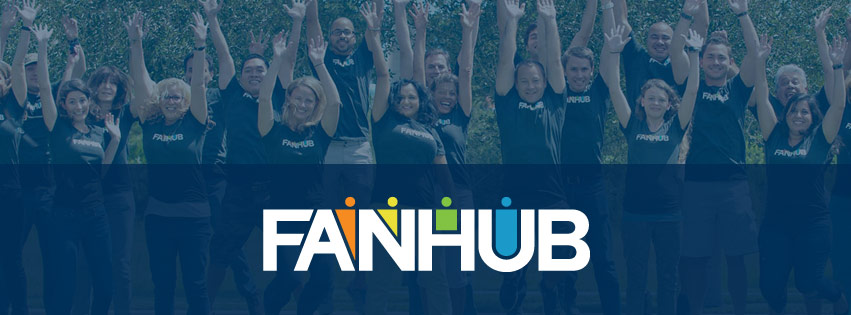 Steve McIntosh, Chief Fan Ambassador of Fanhub, a collaboration platform for small businesses, talks to us about how to integrate social media culture with traditional business, why being open-minded is a key to making successful workplace change, and how customers are your true sales force. And he offers five key lessons managers can use to leverage social media in business, giving insight into positive ways managers can make “social” an influential component of workplace productivity.
Steve McIntosh, Chief Fan Ambassador of Fanhub, a collaboration platform for small businesses, talks to us about how to integrate social media culture with traditional business, why being open-minded is a key to making successful workplace change, and how customers are your true sales force. And he offers five key lessons managers can use to leverage social media in business, giving insight into positive ways managers can make “social” an influential component of workplace productivity.
SJ: A shift away from the atmosphere of a corporate hierarchy to a more collaborative workflow platform with a social media look and feel is right on target. Tell us about that “Aha!” moment when you actually “saw” how this type of communication could be effective? That moment when Fanhub was born? Steve: There was no Aha moment in particular. Fanhub was an evolution, a result of our yearning for more efficient collaboration across teams. We went through many iterations of different features before we finally said: “Yes, this is what we wanted all along!”
SJ: You talk about being an entrepreneur from the age of thirteen. What is one takeaway from that experience which carried over into your success with Fanhub? Steve: Everything big ultimately starts as something small. When a new business is just starting out, it is your passion that will enable you to persevere as the business gains its footing.
SJ: Beyond the five lessons social media can teach managers, what’s one additional insight you could offer business owners about staying open-minded to the rapid changes social technology brings to operating/marketing their brand? Steve: Change is the one constant in life and in business. You can either resist it or your can embrace it. When you embrace change, you have an opportunity to really shape how it affects your organization. When it comes to workplace changes inspired by social media, managers should not be afraid to experiment or even to fail. The key is to see what works and drop what doesn’t.
SJ: Clearly, in terms of importance, the customer is front and center for you. When was the moment you really understood treating customers like fans was more than just traditional “customer service”? Steve: We wholeheartedly believe that the easiest way to sell a product is by good word of mouth. To build your business around referrals means that you have to treat every customer, even the ones that tick you off, as if they have the ability to win you 10 more customers or to rob you of 100. Your customers are your greatest sales force.
SJ: In your blog, you talk about the wall of failure. What’s been your best business failure to date? Steve: We tried to force tools on our own business that weren’t designed for small businesses. But it might just have been the best failure ever, because what we learned led us to create Fanhub.
SJ: How do you keep your associates excited about coming in to work each day? Is it just the excitement of a collaborative atmosphere or do you have an awesome coffee supplier we should know about? Steve: We’ve built a culture that is not afraid to bet on big game changing ideas. Couple that with a sense of urgency and a collaborative, team mindset, and you’ve got an environment that keeps employees excited and engaged.
SJ: Of the many social platforms available, which one is currently creating the most engagement for Fanhub and why? Steve: We have the most activity on Twitter. I believe it is because it is a space where people post what is top of mind and reach out to follow subjects they are interested in.
SJ: If Fanhub had a theme song, what would it be? Steve: We operate according to our own beat. As such, it would be a song that the Fanhub team members collaborated on to create the music and lyrics. 
5 Lessons that Social Media Can Teach Managers
1. You Don’t Need Catch Up Meetings In the business world, managers often use meetings to “get people up to speed.” However, catch up meetings are expensive and inefficient because they require organization, planning, and a halt to productive work. Social media is proof that hundreds of millions of people can be on the same page without ever meeting face to face. Thanks to Facebook and Twitter, we receive real-time updates on political events, product launches, research findings, sport games, and birthdays, to name just a few examples. People engaged in the same social media communities are always up to speed. With a variety of internal communication tools, business teams can post Q1 sales results, announce progress on a major software update or share new copy for a marketing campaign. Managers can use continuous, web-based discussion to get people on the same page without gathering in the same room.
2. Build Collective Knowledge Information is often siloed with one person at a business. In the social media world, people elevate the limited knowledge of the individual into the collective knowledge of the many. Wikipedia is an outstanding example of this. In the past, encyclopedia publishers had to track down one expert who could write an entry and perhaps update it a few years later. On Wikipedia, multiple experts can write, and watchful contributors can make sure the knowledge evolves with current events and new discoveries. If only one person knows how a business process works, that’s a risk. When that person goes on vacation or leaves the company, your team is stranded without critical knowledge. It could be something as simple as how a firewall is set up. Lose your firewall expert and suddenly you have to hire another expert or replace the firewall if a problem arises. As a manager, you have to encourage social documentation that lets people view, modify, and add to the common pool of knowledge. A company Wiki or team document sharing system can ensure that knowledge is saved and grown rather than lost.
3. Solve Problems Collaboratively Crowd-sourcing is one of the most powerful problem-solving tools to emerge from social media. Companies can now post big data challenges, graphic design projects, marketing campaigns or open source software on social sites and watch as people compete or collaborate to get better results. In traditional business, managers delegate problems to an individual or small group. But now managers can use internal social tools to post the toughest challenges before wide groups of employees who really can’t meet (in person or digitally) and flesh out a solution in a limited period of time. For instance, marketing departments often have a hard time coming up with great slogans, product names, event names, and other language. Instead of pinning the responsibility on a few people, a marketing manager could crowd-source suggestions on the company’s internal social platform. Jane in finance and John from IT will bring new perspectives, spark new ideas and ultimately contribute to final wording that blends the best suggestions.
4. Break Down Departmental Divides In a typical business, different departments are unaware of what the others are doing. This leads to overlap, rivalry, and generally uncoordinated efforts. Social media has proven that people from very different walks of life, different ‘departments’ if you will, can coordinate and come together for a common cause. When we look at some of the most powerful political movements of the digital age, like the Arab Spring and Occupy Wall Street, we see how social media helps disparate people share a vision and act on it. In 2012, we also saw how Israelis and Iranians on the opposite sides of a bitter conflict used social media to deliver messages of peace and understanding. Social media offers plenty of evidence that managers can use social technology to create bridges between departments and build a more cohesive workplace.
5. Elevate Communication and Culture Over Hierarchy On many social media sites, the quality of content comes before fame and rank. On Twitter, everyone has the potential to have their voice heard and build a following. On StumbleUpon, every piece of content has the potential to rise in popularity and gain visibility. This openness allows digital communities and cultures to expand throughout the social media world. Everyone feels included. In businesses, however, hierarchy and ‘lunch room’ dynamics can limit communication and a shared sense of culture. New recruits chat with new recruits, and executives eat lunch with executives. When business ideas flow strictly from the top down, employees feel alienated. Managers can build a tighter, more inclusive corporate culture by cultivating a social media mentality. Just by talking with junior employees, soliciting their ideas, inviting them to lunch and building relationships, managers can break down the imaginary barriers that naturally disappear in social media. With or without a social tool, managers can help people feel like they belong to a community.
The Bigger Picture Ultimately, a company with fewer meetings, smarter collaboration, and more unity is going to be more productive and require less hands-on management. Great teachers create students that can teach themselves, and great managers create teams that can manage themselves. The key lesson from social media is that managers need strategies and tools that open lines of communication between employees, departments, and different levels of the corporate ladder. In the past, business dialogue was primarily top down, trapped in meeting rooms and segmented in small groups. In the future, conversations will be horizontal, public, and shared by workforces of any size.